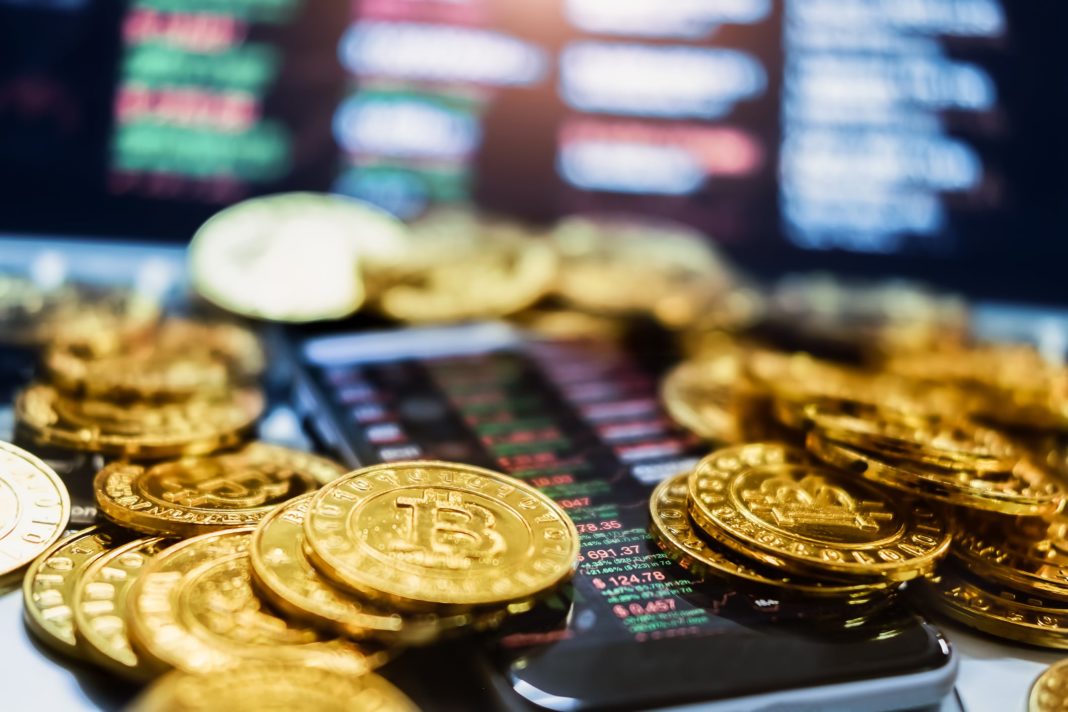For more than a century, history has been pretty clear: Investing in the stock market has been one of the most-effective ways to build wealth over time. Although we’ve seen assets like housing and commodities like gold have their day in the sun, they’ve not come close to matching the long-term total returns (including dividends) of the broader market.
But this long-term strategy of buying and holding stocks has seemingly been put on the back burner since cryptocurrencies made their debut. Bitcoin (CRYPTO:BTC) and Ethereum, the two-largest digital currencies by market value, both traded well below $1 following their inception and now go for around $50,000 and $4,000 per token, respectively.
Yet it’s not Bitcoin or Ethereum that’s been generating the most buzz on Wall Street in 2021. Rather, joke cryptocurrency Dogecoin (CRYPTO:DOGE) has been all the rage.

Image source: Getty Images.
Dogecoin has outperformed pretty much every asset over the past year
It’s no secret that young investors love chasing after momentum plays. With Dogecoin rising by more than 22,000% over the trailing 12 months, it’s been arguably the best-performing asset on the planet.
Supporters continue to lean on its perceived growing utility, its lower transaction fees relative to Bitcoin and Ethereum, and Tesla Motors‘ CEO Elon Musk’s numerous tweets mentioning Dogecoin as catalysts. Musk recently served as the host of Saturday Night Live, with one of the skits mentioning Dogecoin.
The self-proclaimed “Dogefather” also recently announced that he would work with Dogecoin’s developers to improve transaction efficiency. This came just a day after Musk tweeted that Tesla would stop accepting Bitcoin as payment for its electric vehicles due to environmental concerns associated with mining Bitcoin.
The social media boards are abundant with potential catalysts for Dogecoin — too bad none of these catalysts holds any substance. Peel back the incessant hype and look at the tangible data, and you’ll find that Dogecoin is nothing more than a massive bubble waiting to burst.

Image source: Getty Images.
The Dogecoin bull thesis lacks teeth if you look past the hype
To start with the obvious, Elon Musk tweeting about Dogecoin shouldn’t have any tangible effect on its value whatsoever. A single tweet doesn’t drastically improve its adoption or make the network more efficient or cheaper on a per-transaction basis. Relying on tweets as a core catalyst is nothing more than theater and an admission to the lack of tangible catalysts behind Dogecoin.
As for those pesky transaction fees, Dogecoin isn’t as impressive as you might think. While its fees are indeed lower than Bitcoin and Ethereum, they’re considerably higher than the likes of Stellar, Nano, Bitcoin Cash, Bitcoin SV, Dash, Ripple, Ethereum Classic, and many more cryptocurrencies. Cherry-picking the two most-popular coins while ignoring the complete lack of a barrier to entry in the crypto space exposes the Dogecoin transaction-fee bull thesis as hot air.
In terms of usability, only around 1,300 businesses worldwide accept Dogecoin as payment. Even if Tesla were to one day greenlight Dogecoin for payment, the fact remains that this meme-founded digital currency has, in eight years, managed to gather a mostly obscure list of businesses that’ll accept it out of an estimated 582 million entrepreneurs worldwide.
But if these three reasons to avoid Dogecoin aren’t enough, I’ve got one more — or should I say 700 million more?

Image source: Getty Images.
700 million reasons Dogecoin’s market value makes no sense
According to data from BitInfoCharts.com, Dogecoin has averaged in the neighborhood of 50,000 transactions daily over the past year. How does this stack up globally, you ask? In 2018, per the Nilson Report, there were just shy of 369 billion credit-based transactions, or approximately 1.01 billion per day.
Even though this figure has probably grown a tad since 2018, this means Dogecoin’s 50,000 transactions a day equates to a microscopic 0.004947% of all global daily transactions. And it gets better.
At close to $0.56 per coin, Dogecoin has a market value of a little over $72 billion. By comparison, payment-processing giants Visa (NYSE:V) and Mastercard have respective market caps of $499 billion and $361 billion ($860 billion combined). Together, Visa and Mastercard handled almost 70% of daily global transactions in 2018 — 700 million per day. Yet Dogecoin is approaching a tenth of their combined value despite handling only 0.00714% of the transactions Visa and Mastercard combine to process daily.
You don’t need a computer science degree or a master’s degree in economics to see that the numbers here don’t add up. Even taking into account that comparing for-profit businesses like Visa and Mastercard to a blockchain-based digital currency isn’t apples to apples, there’s absolutely no logical reason Dogecoin should sport a market value this high when it’s doing so little for the real world.
As I’ve previously stated, Dogecoin is driven by hype and has all the hallmarks of a classic pump-and-dump scheme. I’m not entirely sure when, specifically, this massive bubble is going to burst. What I am certain of is that this valuation for a cryptocurrency that possesses no special attributes won’t last.
This article represents the opinion of the writer, who may disagree with the “official” recommendation position of a Motley Fool premium advisory service. We’re motley! Questioning an investing thesis — even one of our own — helps us all think critically about investing and make decisions that help us become smarter, happier, and richer.






